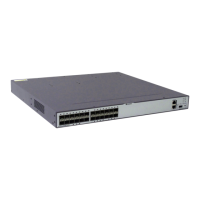BGP confederations can be configured on a large BGP network to reduce the number of IBGP
connections and simplify routing policy management, increasing route advertisement efficiency.
7.11 Configuring BGP Community Attributes
Community attributes are used to simplify routing policy management.
7.12 Configuring to Adjust the BGP Network Convergence Speed
You can adjust the BGP network convergence speed by adjusting BGP peer connection
parameters to adapt to changes on large-scale networks.
7.13 Configuring BGP Route Dampening
BGP route dampening can be configured to suppress unstable routes.
7.14 Configuring a BGP Device to Send a Default Route to Its Peer
After a BGP device is configured to send a default route to its peer, the BGP device sends a
default route with the local address as the next-hop address to a specified peer, regardless of
whether there are default routes in the local routing table. This greatly reduces the number of
routes on the network.
7.15 Configuring BGP Load Balancing
Configuring BGP load balancing better utilizes network resources and reduces network
congestion.
7.16 Configuring the BGP Next Hop Delayed Response
Configuring the BGP next hop delayed response can minimize traffic loss during route changes.
7.17 Configuring BFD for BGP
BFD for BGP speeds up fault detection and therefore increases the route convergence speed.
7.18 Configuring BGP Security
Authentication can be implemented during the establishment of a TCP connection to enhance
BGP security.
7.19 Maintaining BGP
Maintaining BGP involves resetting a BGP connection and clearing BGP statistics.
7.20 Configuration Examples
This section provides several configuration examples of BGP.
S6700 Series Ethernet Switches
Configuration Guide - IP Routing 7 BGP Configuration
Issue 01 (2012-03-15) Huawei Proprietary and Confidential
Copyright © Huawei Technologies Co., Ltd.
361

